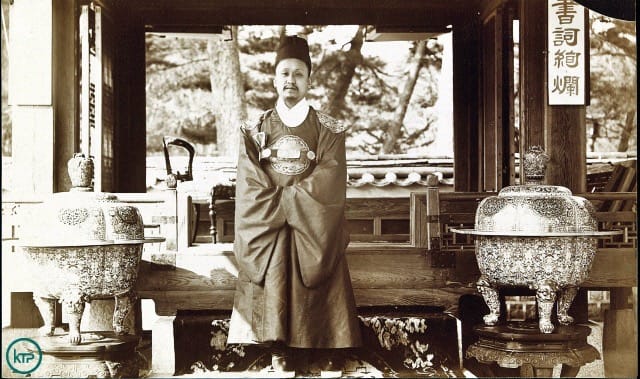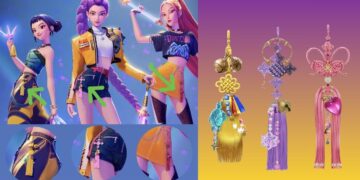Last Updated on 2 years by admin
Coffee has become an essential part of many people’s daily lives worldwide. From classic espresso shots to unique specialty concoctions, this beloved beverage continues to capture the hearts of caffeine enthusiasts everywhere. In South Korea, the coffee culture has experienced remarkable growth and development, making it an exciting destination for coffee lovers all over the globe. Discover some interesting facts about coffee culture in South Korea, from its captivating history to popular coffee shops, below.
Interesting Facts About Coffee Culture in South Korea
1. Introduction of Coffee Culture in South Korea

Coffee in Korea has a fascinating history dating back to the late 1800s, with King Gojong playing a significant role. King Gojong’s love for coffee flourished during his time at the Russian embassy, and he even built Korea’s first café, Jeonggwang-heon, exclusively for himself and his guests. This enthusiasm for coffee persisted throughout the Japanese occupation.
The captivating aroma of coffee attracted the elite, including various royals, politicians, artists, and intellectuals in Korea. An advertisement for “Java Coffee” appeared in a Korean newspaper in 1897, likely imported from Dutch-controlled Indonesian plantations. The arrival of coffee marked the beginning of a flavorful brew and the thriving coffee culture that continues to thrive today.
2. Evolution of Dabang (Tearoom) into Modern Cafes
During the early 20th century, coffee represented elevated social status and embodied Western culture in South Korea. In 1902, Antoinette Sontag opened the first cafe (dabang) at the Sontag Hotel in Seoul. As time passed, dabangs emerged in Myeongdong and Jongno, gaining popularity among Korea’s cultural elites, such as writers, artists, and intellectuals. Dabangs served as gathering places, reminiscent of Parisian cafes, and contributed significantly to Korea’s café culture and coffee scene before the rise of instant coffee.
Following the war, the popularity of dabang as a popular meeting place came back in the 1960s. However, in the early years of the 20s, the traditional Korean dabang was slowly replaced by modern cafes serving various beverages, including coffee. This shift marked the rise of coffee culture in South Korea. As take-out culture grew and coffee vending machines became prevalent, dabang gradually disappeared. Although some dabangs remain, they are vastly outnumbered by modern cafes.
3. Instant Coffee’s Popularity Surge
Instant coffee gained immense popularity in South Korea during the Korean War. Dong Suh Foods Corporation launched a 3-in-1 instant coffee mix to contribute to this trend. This convenient form of coffee quickly became a staple in many Korean households, offering a quick caffeine fix on busy mornings.
4. The Coffee Capital of Korea and Annual Coffee Festival
Gangneung, a city located on South Korea’s east coast, holds the title of the coffee capital of the country. With its breathtaking scenery, charming cafes, and annual coffee festival, Gangneung promises a distinctive and unforgettable coffee experience.
The Coffee Festival, held in October each year, showcases renowned coffee companies, provides complimentary tastings and seminars, and hosts thrilling barista competitions. Visitors can indulge in various coffee flavors while immersing themselves in cultural events and family-friendly activities. All of this unfolds against the backdrop of Gangneung’s mesmerizing coastal scenery.
5. Korea: The World’s Coffee Hub with the Most Q-Graders
Korea has become a thriving hub for coffee enthusiasts, with the highest number of Q-graders in the world. These certified coffee tasters evaluate coffee beans with precision, leading to the emergence of specialty coffee shops or cafes that offer expertly sourced beans and unique brewing methods in Korea.
6. The Rise of Cafe Culture
South Korea has witnessed a coffee revolution in recent years, with an astonishing number of coffee chains popping up nationwide. As reported by KBS in January 2023, South Korea is now home to nearly 100,000 cafes, according to the Korea Agro-Fisheries and Food Trade Corporation. This explosion of coffee chains in Korea has transformed the urban landscape and created a vibrant cafe culture that caters to all tastes and preferences.
7. Popular Korean Coffee Shops
Hollys Coffee was Korea’s top local coffee chain before Starbucks arrived in 1999. It remains popular today, alongside other large coffee chain shops in the country. Here are the top 15 coffee chains in South Korea by alphabet:
- Angel-in-us Coffee
- A Twosome Place
- Caffe Bene
- Café Pascucci
- Coffine Gurunaru
- Banapresso
- Cafe DropTop
- Compose Coffee
- dal.komm Coffee
- Ediya Coffee
- Hollys Coffee
- Mega Coffee
- Paik’s Coffee
- Paul Bassett
- Tom N Toms Coffee
These coffee chain cafes in South Korea have gained a wide following due to their commitment to quality, innovative menu offerings, and inviting atmospheres that make them beloved by coffee enthusiasts and casual consumers alike.
8. Korean Loves to Drink Iced Americano (A-A) in Winter
Interestingly, Koreans choose Iced Americano as their preferred coffee, even in chilly weather. And surprisingly, they consume more Iced Americano than warm beverages, even during winter. This preference has given rise to a new phrase, “Eoljukah,” which translates to “Iced coffee even if I freeze to death.”
The popularity of Iced Americano can be attributed to Korea’s fast-paced culture, as it allows for quick preparation compared to other drinks. It also serves as a palate cleanser after meals, a thirst-quencher, or simply a way to stay refreshed with its icy touch and caffeine boost.
Conclusion
South Korea’s coffee culture is an ever-evolving landscape that continues to captivate both locals and tourists. From its historical roots to its modern-day cafe boom, coffee has firmly established itself as an essential part of South Korean daily life.
So, the next time you find yourself exploring the lively streets of Seoul or relaxing on the shores of Gangneung, indulge in a cup of coffee and savor South Korea’s unique experience. Explore Korean coffee culture to discover the artistry and joy of the perfect cup of coffee!
From picturesque landscapes to hidden gems and cultural adventures, follow KoreaTravelPost’s Twitter, Facebook, Instagram, LinkedIn, and Flipboard for a thrilling journey through the heart of Korea.
Related Posts
6,432 total views, 1 views today

















